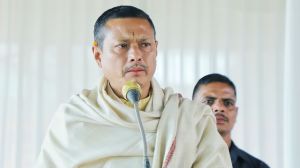Look at the pyramid’s base
In a seminal contribution, Professor Partha Dasgupta (An Inquiry into Well-Being and Destitution, Oxford...

In a seminal contribution, Professor Partha Dasgupta (An Inquiry into Well-Being and Destitution, Oxford: Clarendon Press, 2000) characterised destitution as “first and foremost a personal calamity; and, although not self-evident, it is usually seen also as a grave weakness of any society that harbours it. However, … there has been no real attempt to — face the phenomenon as it occurs in the world we have come to know.” While this indictment is somewhat exaggerated, the perspective is undeniably rich, insightful and persuasive. In a response, the International Food Policy Research Institute study (The World’s Most Deprived, Washington DC, released on November 6, 2007) addresses an important concern, that is, are development programmes reaching those in need, or are they primarily benefiting those who are easier to reach, leaving the very poorest behind? The population of the developing world is divided into three categories: subjacent poor, those living on between $0.75 and $1 a day; medial poor, those living on between $0.50 and $0.75 a day; and ultra poor, those living on less than $0.50 a day.
Of the world’s 969 million extremely poor (that is, those living on $1 a day) in 2004, 162 million were ultra poor (or lived on less than $0.50 a day-by no means a small number. About three quarters of the latter were concentrated in Sub-Saharan Africa while the majority of the subjacent and medial poor were located in South Asia.
The progress against poverty has been uneven — ironically, it has been slowest in regions where poverty is most severe. The reduction in global poverty during 1990-2004 was largely a reflection of the impressive strides by East Asia and the Pacific, followed by South Asia. In East Asia and the Pacific the dollar-a-day poverty incidence plummeted from 29.8 per cent to 9.1 per cent. By contrast, poverty rates fell slightly in Sub-Saharan Africa (from 46.8 per cent to 41.1 per cent) and in Latin America and the Caribbean (from 10.2 per cent to 8.6 per cent). A related and more worrying finding is that developing countries in general recorded larger reductions in subjacent and medial poverty than in ultra poverty. In South Asia, for example, the ultra poor benefited the least while those in medial poverty benefited the most. A case in point is India where the medial poor benefited the most. In Sub-Saharan Africa, the ultra poor have been excluded from whatever progress has been made in combating poverty.
A disaggregation of the hungry into similar categories: subjacent hungry comprise those consuming between 1800-2200 calories per day; medial hungry are those with a calorie intake between 1600-1800 calories a day; and ultra hungry have the lowest calorie intake (less than 1600 calories per day) is revealing. Once again there is a marked regional contrast. In most of the Asian and Latin American countries surveyed, there are as many subjacent hungry as ultra hungry. In the African sample, however, most of the hungry consume less than 1600 calories per day.
While there is considerable overlap between the poor and hungry-the majority of the poor are also hungry-these are distinct groups. In Sub-Saharan Africa, the overlap is particularly high (in Kenya, Malawi and Burundi, for example, well over 90 per cent of the poor are also hungry). In South Asia too (for example, in Sri Lanka, Pakistan and India), the proportion of hungry among the poor is high — slightly lower than 90 per cent or more — confirming that poverty has a key causal role in hunger. But the proportions of hungry who are also poor is substantially lower in many cases (as low as about 10 per cent in Sri Lanka and 19 per cent in Pakistan). In this sense, hunger as a measure of deprivation is more pervasive than dollar-a-day poverty, without overlooking that a non-negligible sub-set of the so-called hungry is energy-deficient for dietary reasons.
Much of the evidence is a sobering reminder that growth is not synonymous with poverty reduction. Despite accelerated growth in recent years, the 61st round of the NSS shows that nearly a quarter of the rural population in India was mired in acute poverty in 2004-05, with the STs and SCs faring much worse. The policy design ought not to be limited to enhancing the endowments of the STs, SCs and other disadvantaged groups-women from these groups, for example, have to bear the double burden of deprivation-but must also address the issue of lower returns (for example, returns to education). While there are elements of discrimination, identity has a potentially important role too in perpetuating destitution. Unfortunately, with all its comprehensiveness, the IFPRI study overplays the clichés of social exclusion and poverty traps, and glosses over the complex inter-relationships between ethnicity and identity in mitigating persistent destitution.
Raghav Gaiha is professor of public policy, Faculty of Management Studies, University of Delhi; and Vani S. Kulkarni is research fellow, Harvard Centre for Population and Development Studies
rdgbol.net.in



- 01
- 02
- 03
- 04
- 05




























